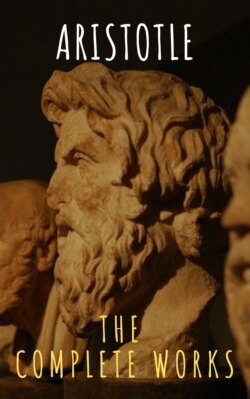Читать книгу Aristotle: The Complete Works - Aristotle - Страница 53
На сайте Литреса книга снята с продажи.
21
ОглавлениеIf one premiss is pure, the other problematic, the conclusion will be problematic, not pure; and a syllogism will be possible under the same arrangement of the terms as before. First let the premisses be affirmative: suppose that A belongs to all C, and B may possibly belong to all C. If the proposition BC is converted, we shall have the first figure, and the conclusion that A may possibly belong to some of the Bs. For when one of the premisses in the first figure is problematic, the conclusion also (as we saw) is problematic. Similarly if the proposition BC is pure, AC problematic; or if AC is negative, BC affirmative, no matter which of the two is pure; in both cases the conclusion will be problematic: for the first figure is obtained once more, and it has been proved that if one premiss is problematic in that figure the conclusion also will be problematic. But if the minor premiss BC is negative, or if both premisses are negative, no syllogistic conclusion can be drawn from the premisses as they stand, but if they are converted a syllogism is obtained as before.
If one of the premisses is universal, the other particular, then when both are affirmative, or when the universal is negative, the particular affirmative, we shall have the same sort of syllogisms: for all are completed by means of the first figure. So it is clear that we shall have not a pure but a problematic syllogistic conclusion. But if the affirmative premiss is universal, the negative particular, the proof will proceed by a reductio ad impossibile. Suppose that B belongs to all C, and A may possibly not belong to some C: it follows that may possibly not belong to some B. For if A necessarily belongs to all B, and B (as has been assumed) belongs to all C, A will necessarily belong to all C: for this has been proved before. But it was assumed at the outset that A may possibly not belong to some C.
Whenever both premisses are indefinite or particular, no syllogism will be possible. The demonstration is the same as was given in the case of universal premisses, and proceeds by means of the same terms.
